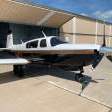Loss of power after takeoff
-
Members Online
- Chris Strube
- eman1200
- Rmfriday
- Greg Ellis
- donkaye, MCFI
- PT20J
- skipswift
- Ranger_Pete
- bixmooney
- N201MKTurbo
- Clearview
- Ragsf15e
- Shadrach
- mooneyfun
- SKI
- Parker_Woodruff
- ElkoRandy20J
- DanM20C
- ta2too
- Skyland
- kaba
- M20C66Q
- redbaron1982
- rahill
- Gilt
- AH-1 Cobra Pilot
- NickG
- PaulM
- Jetdriver
- steve s
- Jackk
- wings_level
- Fly Boomer


Recommended Posts